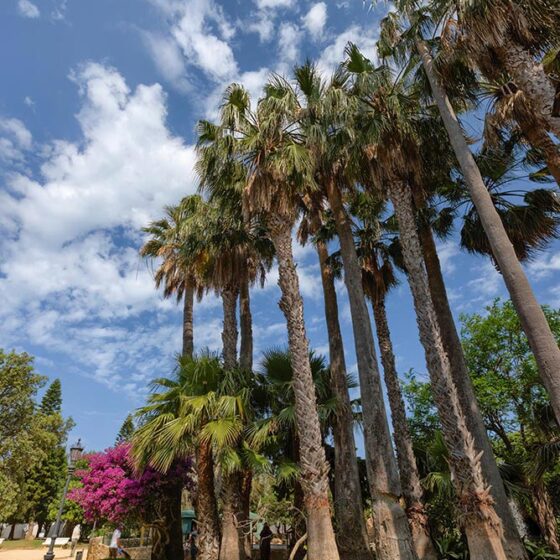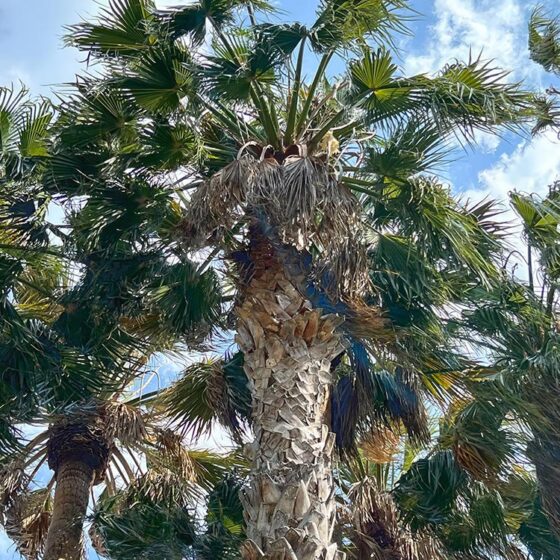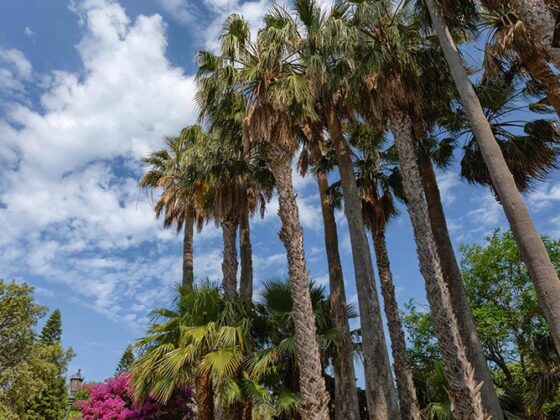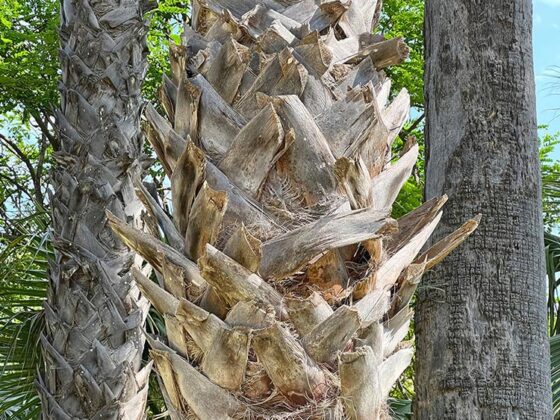Mexican palm tree
Washingtonia robusta
This palm tree received this generic name in honour of George Washington. And its specific name of the Latin “robustus”, meaning resistant.
It presents a thinner trunk than the Washingtonia filiferous and is widened at the base, which is a greyish colour. It is smooth and covered by remains of leaves on its upper part. Despite the name of the species, the tree is a tall and slender palm, and can reach up to 22 m in height.
Its leaves have short petioles and are shaped in the form of a fan, up to 1m wide. The inflorescences are branched and hanging, they sprout from the creases in the lower leaves, the flowers being cream in colour and small. The fruits are spherical shaped, small and dark brown in colour.
It is disseminated by seeds and is faster than W.Filifera, because it supports less cold than this one (-8ºC). It does not require soils of a certain nature, but a climate of moderate temperatures and a certain humidity. It can produce hybrids with W.filífera.
It comes from the northwest of Mexico, the South of Sonora and Lower California.
They are used in gardening in the east and south of the peninsula as an ornamental plant in parks, often forming clusters. In Cadiz there are many examples that can be seen in Genovés Park, Alameda de Apodaca, Plaza de España, Paseo Marítimo and Parque de los Cinco Continentes.







